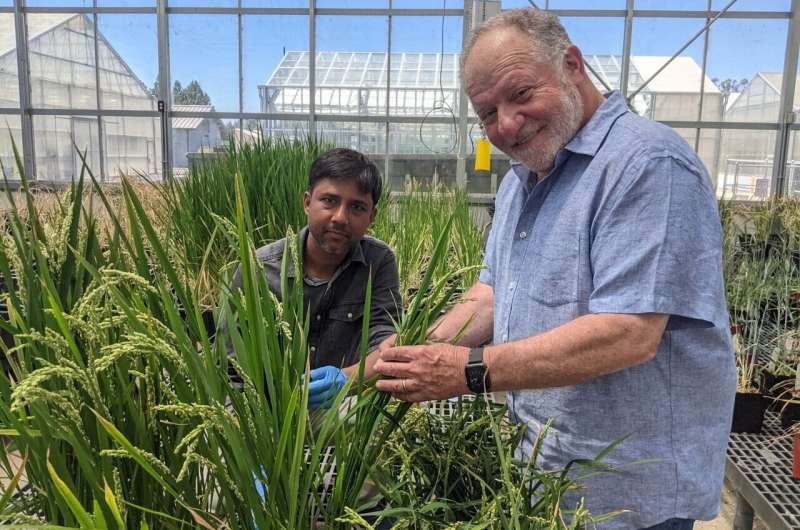Researchers at the University of California, Davis have found a way to reduce the amount of nitrogen fertilizer needed to grow cereals.
by Emily C. Dooley, University of California, Davis
The discovery could save US farmers billions of dollars a year in fertilizer costs while benefiting the environment.
The research comes from the laboratory of Eduardo Blumwald, a distinguished professor of plant sciences, who has found a new way for cereals to capture the nitrogen they need to grow.
The discovery could also help the environment by reducing nitrogen pollution, which can lead to polluted water resources, increased greenhouse gas emissions, and human health problems. The study was published in the journal Plant Biotechnology.
Nitrogen is key to plant growth, and farming operations rely on chemical fertilizers to increase productivity. But much of what is applied is lost and leaches into soils and groundwater. Blumwald’s research could create a sustainable alternative.
“Nitrogen fertilizers are very, very expensive,” Blumwald said. “Anything you can do to eliminate that cost is important. The problem is money on the one hand, but there are also the harmful effects of nitrogen on the environment.
A new path towards natural fertilizers
Blumwald’s research focuses on increasing the conversion of nitrogen gas from the air to ammonia by soil bacteria, a process known as nitrogen fixation.
Legumes such as peanuts and soybeans have root nodules that can use nitrogen-fixing bacteria to provide plants with ammonia. Cereal plants such as rice and wheat do not have this ability and must rely on the uptake of inorganic nitrogen, such as ammonia and nitrate, from soil fertilizers.
“If a plant can produce chemicals that cause soil bacteria to fix atmospheric nitrogen gas, we could modify plants to produce more of these chemicals,” Blumwald said. “These chemicals will induce bacterial nitrogen fixation in the soil and the plants will use the ammonium formed, reducing the amount of fertilizer used.”
Blumwald’s team used chemical screening and genomics to identify compounds in rice plants that enhanced the bacteria’s nitrogen-fixing activity.
They then identified the pathways that generate the chemicals and used gene-editing technology to increase the production of compounds that stimulated biofilm formation. Those biofilms contain bacteria that enhanced nitrogen conversion. As a result, the nitrogen-fixing activity of the bacteria increased, as did the amount of ammonium in the soil for the plants.
“Plants are incredible chemical factories,” he said. “What this could do is provide a sustainable alternative farming practice that reduces excessive use of nitrogenous fertilizers.”
The pathway could also be used by other plants. The University of California has filed a patent application on the technique and it is pending.
Dawei Yan, Hiromi Tajima, Howard-Yana Shapiro, Reedmond Fong, and Javier Ottaviani of UC Davis contributed to the research paper, as did Lauren Cline of Bayer Crop Science. Ottaviani is also a research associate on Mars Edge.
More information: Dawei Yan et al, Genetic modification of flavone biosynthesis in rice enhances biofilm formation of soil diazotrophic bacteria and biological nitrogen fixation,
Plant Biotechnology Journal (2022). DOI: 10.1111/pbi.13894
–


